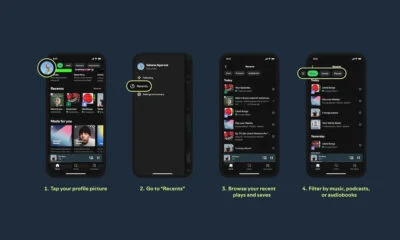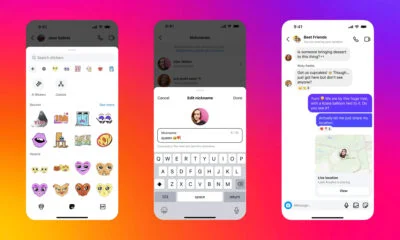News
Low-Code/No-Code: Democratizing Software Development
Learn how low-code/no-code platforms are revolutionizing software development and empowering organizations.

It’s no secret software development is no easy task; writing good code is a skill that takes years to master and is a continual learning experience. Coding demands a highly advanced and in-depth understanding of programming languages and development protocols, especially considering the complexity of enterprise applications. It’s certainly not something the average Joe can just pick up and learn.
Demand Vs Supply: The Global Developer Shortage
As more and more processes are automated, this creates a need for new applications, and the bottom-line is there’s a global shortage of skilled developers to meet these application demands.
We’ve reached a point where there are far too many vacancies and not enough highly skilled developers available — despite numerous layoffs — and this shortage is only expected to get worse.
Organizations need to change their approach to combating this shortage. Instead of waiting for a skilled developer to turn up, the focus must shift to simplifying software development, enabling anyone to participate in the development process even without formal training. Enter citizen development.
Citizen development is an approach to software development that revolves around enabling non-IT-trained individuals in an organization to develop software, workflows, and automations without having to rely on skilled coders.
Software Development Doesn’t Need To Be Complicated
Due to ease of use, low-code/no-code (LC/NC) development platforms are leading the citizen development charge. These platforms make software development accessible and fairly easy to pick up due to the straightforward and intuitive interfaces they feature.
With LC/NC platforms, the development process can be as simple as dragging and dropping software elements and linking them to create workflows. The underlying code governing the behavior of these elements is prewritten and designed to help them work together. Thanks to these platforms, developers no longer have to write each line of code individually, freeing them up to focus on more pressing tasks. These platforms also enable those without formal software development training and experience to develop simple applications or software functions. This can significantly shorten development times, enabling rapid delivery.
More and more organizations are beginning to adopt LC/NC platforms into their development process; Gartner predicts that “by 2025, 70% of new applications developed by organizations will use low-code or no-code technologies“.
It’s Not All Smooth Sailing, However..
Yes, LC/NC platforms can greatly speed up the software development process, but they lack the scalability and control traditional coding offers since you’re relying on the functionality of a completely distinct development platform. And while nowhere near as steep as pro-code development, LC/NC platforms do still have a learning curve, especially when you’re someone with limited or zero software development experience. This means training costs will also have to come into the equation when an organization aims to equip a team of citizen developers.
When dealing with citizen developers and their relatively limited skillsets, experts still have an important role to play in the development process. Someone needs to test the applications developed by citizen developers to make sure everything is working as it should, and who better to handle testing than the experts? And it’s not just testing; they can even make optimizations when necessary.
A Future Where Skilled Coders And Citizen Developers Can Work Together
The increasing adoption rates of LC/NC platforms aren’t a threat to developer jobs. These platforms aren’t going to replace them; rather, they can free the experts up to actually focus on critical development tasks instead of repetitive and simple processes.
If anything, the increased adoption rates of LC/NC platforms will drive up the stock of expert coders because we’re looking at a future where anyone can develop software but only a few can code.
News
Samsung Smart Glasses Teased For January, Software Reveal Imminent
According to Korean sources, the new wearable will launch alongside the Galaxy S25, with the accompanying software platform unveiled this December.

Samsung appears poised to introduce its highly anticipated smart glasses in January 2025, alongside the launch of the Galaxy S25. According to sources in Korea, the company will first reveal the accompanying software platform later this month.
As per a report from Yonhap News, Samsung’s unveiling strategy for the smart glasses echoes its approach with the Galaxy Ring earlier this year. The January showcase won’t constitute a full product launch but will likely feature teaser visuals at the Galaxy S25 event. A more detailed rollout could follow in subsequent months.
Just in: Samsung is set to unveil a prototype of its augmented reality (AR) glasses, currently in development, during the Galaxy S25 Unpacked event early next year, likely in the form of videos or images.
Additionally, prior to revealing the prototype, Samsung plans to introduce…
— Jukanlosreve (@Jukanlosreve) December 3, 2024
The Galaxy Ring, for example, debuted in January via a short presentation during Samsung’s Unpacked event. The full product unveiling came later at MWC in February, and the final release followed in July. Samsung seems to be adopting a similar phased approach with its smart glasses, which are expected to hit the market in the third quarter of 2025.
A Collaborative Software Effort
Samsung’s partnership with Google has played a key role in developing the smart glasses’ software. This collaboration was first announced in February 2023, with the device set to run on an Android-based platform. In July, the companies reiterated their plans to deliver an extended reality (XR) platform by the end of the year. The software specifics for the XR device are expected to be unveiled before the end of December.
Reports suggest that the smart glasses will resemble Ray-Ban Meta smart glasses in functionality. They won’t include a display but will weigh approximately 50 grams, emphasizing a lightweight, user-friendly design.
Feature Set And Compatibility
The glasses are rumored to integrate Google’s Gemini technology, alongside features like gesture recognition and potential payment capabilities. Samsung aims to create a seamless user experience by integrating the glasses with its broader Galaxy ecosystem, starting with the Galaxy S25, slated for release on January 22.





















